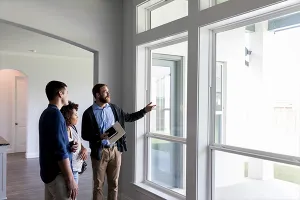
Energy-efficient home upgrades could help homeowners cut their annual energy bills in half while also reducing their home’s carbon footprint. But even though consumers are showing a greater interest in sustainability, nearly a third say they think green remodeling projects are too expensive, according to a survey conducted by Thumbtack, a home services website, and Rewiring America, an electrification nonprofit. Another 31% say they don’t know where to begin when considering green upgrades.
Still, low-cost sustainable projects could result in yearly savings of $200 on electricity bills, which adds up over time, the report finds. Despite their reluctance, nearly three-fourths of consumers say they’re prioritizing sustainability in their home projects this year either because they want to lower their energy bills (55%), help the planet (41%) or feel pressure from neighbors to do so (70%), according to the survey.
The findings piggyback off another recent survey from the National Association of REALTORS® that showed members find value in promoting energy efficiency in listings. The 2023 REALTORS® and Sustainability Report revealed that about a third of agents and brokers are using green data fields in their MLS to promote sustainable home features, believing them to be a selling point. Further, 17% of REALTORS® say high-performance homes—those that have undergone green improvements to increase health, operational efficiency and durability—saw an increase from 1% to 10% in the dollar value of offers compared to a similar, nonperformance home. That could equate to thousands of dollars.
How to Make a Home More Eco-Friendly
“The number one question we hear from consumers is where to start,” says Nicole Staple, head of market partnerships at Rewiring America. “Few people can afford to make these upgrades all at once, so the best first step is to take an inventory of the age of your appliances and then arrange for an energy audit of your home. From there, you can start to make a plan to switch to more efficient electric machines before your old appliances reach the end of their useful lives.”
Rewiring America and Thumbtack provide a breakdown of sustainable upgrades by budget and the potential savings that could result. They also factored in government incentives, tax credits and rebates that can help homeowners save on installation costs with some of these retrofits.
Budget: Under $500
- Energy-efficient lighting
Estimated cost: $240.56
Potential annual savings: $200 (on yearly energy bills) - Smart thermostat
Estimated cost: $239.53
Potential annual savings: $100
Budget: $1,000 to $5,000
- Install EV charger
Estimated cost: $2,230 (not including)
Potential annual savings: up to $1,000 through a 30% tax credit - Double-pane windows
Estimated cost: $1,569 (for 5-8 windows)
Potential savings: $600 with a 30% tax credit and $308 on yearly energy expenses
Budget: $5,000 to $10,000
- Heat pump water heaters (two to three times more efficient than traditional systems)
Estimated cost: $5,280
Potential savings: $1,750 in upfront costs (depending on household income), up to $2,000 through a 30% tax credit and $120 in yearly energy expenses - New insulation
Estimated cost: $9,469
Potential savings: $1,600 (for income-eligible households) in upfront costs, a 30% tax credit for up to $1,200 per year and about $400 in yearly energy expenses - Rooftop solar panels
Estimated cost: $9,640
Potential savings: 30% on upfront costs through government incentives (an average of $2,892) and $100 in yearly energy expenses—even after financing the upfront cost of the panels
Budget: $10,000 to $20,000
- Heat pumps (three to five times more energy efficient than traditional heating systems)
Estimated cost: $16,588
Potential savings: up to $8,000 (depending on household income) in upfront costs through government incentives, up to $2,000 in a 30% tax credit and $330 in yearly energy expenses
*Households who heat their home with electric resistance, fuel oil or propane can save over $1,000 on their yearly energy bills
Budget: $20,000 to $25,000
- Complete all the projects listed above
Estimated cost: $23,000 (using incentives and rebates)
Potential annual savings: $2,500









